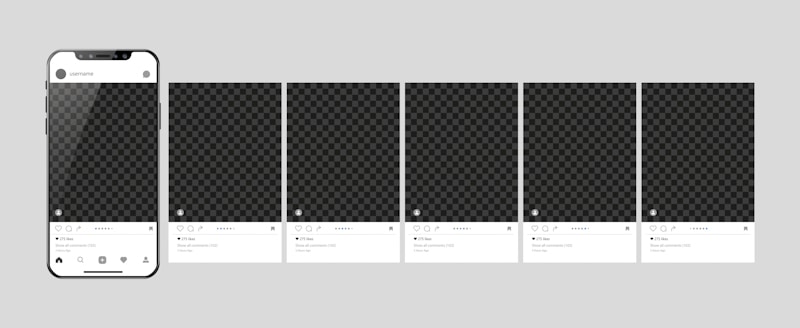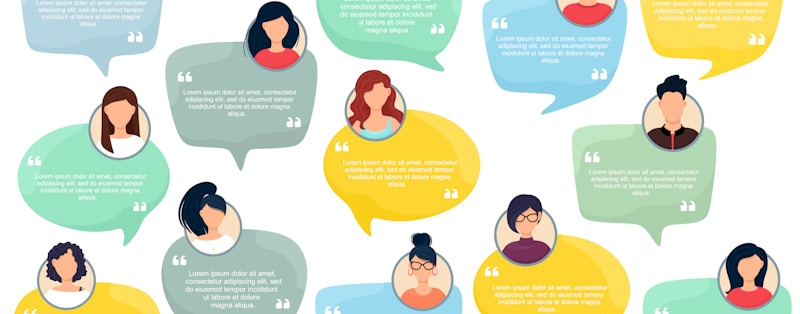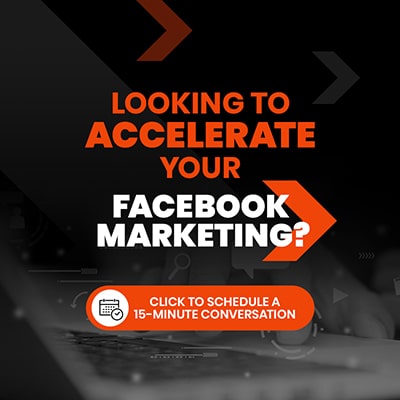


Facebook advertising is an excellent way to access a massive user base and reach out to people who would likely buy or at least be interested in your product. But Facebook doesn’t create ads on your behalf or take active control of your marketing campaign. You have to do all the hard work. So, how to create effective Facebook ads that work?
If you have a long-term vision for your company, do not create Facebook ads with the intent to sell right away. Familiarize your target audience with your brand first. Build a following. Once you’ve built some cachet, use image and video-based ads to good effect. Do not forget to experiment.
With millions of businesses advertising on the platform, grabbing the ideal ad spots or generating solid traction for your adverts on Facebook is easier said than done. Read on to learn everything you must know about advertising on the platform or setting up effective ad campaigns.

Facebook has the second-largest digital advertising share. Also, Facebook is second only to YouTube in terms of traction for a social media site. Users, on average, spend 35 minutes on the site every day.
Because Facebook’s users spend more than a billion hours on the platform daily, businesses are keen on spending millions of dollars on Facebook advertising. According to a study carried out with social media marketers, Facebook is the most effective advertising platform among all social media platforms.
Facebook advertising employs the PPC (pay per click) and CPC (cost per click) advertising models. These ads help create brand awareness, remarket, sell, and accomplish pretty much every other short or long-term goal businesses would have concerning branding and sales.
To create the right Facebook ad for your product, know your options or the ad types you could play with. While Facebook doesn’t officially “classifies” its ads per se, you may broadly categorize its ads based on their form, functionality, and/or purpose.
For instance, some ads help create brand awareness. A few other help with lead generation, app installs, traffic, video views, etc. Some other types get straight to business or help make conversions or promote store visits.
Here are some of the typical ad types:
A photo ad is the first form of advertising most people think of when contemplating Facebook marketing. The ads are pretty popular because they seamlessly blend into the photo-heavy content layout of the site. Photo ads comprise an image, a link to a blog post or landing page, and a call to action (CTA).
If you are testing the waters with Facebook ads, photo ads are a good start. It’s easy to set up and can drive invaluable traffic for the money spent on the ads. Just make sure you choose the right image size and dimensions (width and height). Seek help from a personal branding photographer too.
Facebook’s algorithm loves video content, which includes video ads. Compared to a text or image-based ad, a video ad will likely reach a lot more users. One of the reasons behind video ads’ growing popularity is users generally prefer video content to text-based or static ads.
The video ad need not be a studio production. If it’s capable of showcasing your products in motion or demonstrating their usage, it’s good. The ad’s ideal length is between four to five minutes.
Promotional videos could also be in the form of live videos. The live recording format makes it much easier for the creator to create and share their videos in real-time. When you start to record the video, Facebook will notify your followers. Viewers, as a result, can interact with the video live.
A carousel ad is ideal for a multi-product ad campaign or when you want to showcase different variations of the same item type. Carousel adverts are known for their cost-effectiveness or increased clickthrough rate. The horizontally scrollable ads are inviting or intriguing enough for users to click on or engage with them.
Employ carousel ads to showcase multiple products that are related to or complement each other. Ideally, they should communicate a story or elucidate how the various products interact or are part of a line.

A carousel ad can have up to five pictures and/or videos with calls to action, headlines, or links in one ad unit. Embedding a call to action helps people respond to your ads. The CTA could be phrases such as “Shop Now”, “Sign Up”, “Learn More”, “Apply Now”, “Contact Us”, “Donate Now”, etc.
Choose the correct CTA text for your ad. For instance, if you are selling something, use “Shop Now” or “Buy” and not “Sign Up” or “Learn More”.
Collection ads let you showcase your products, making it easier for potential buyers to learn more about your products, browse them, and make a purchase eventually. These ads are pretty similar to carousel ads as both foci on showcasing several products at a time.
Despite the glaring similarities, there are some unique aspects to each that explain why they are different. The discrepancies have mostly to do with how you can employ and interact with the ads.
Collection ads are mobile-only, and you can only swipe up and down on them. Carousel ads are a bit more versatile. They support both mobile and desktop and can be swiped across. Try the two out, and you’ll learn how well they suit your marketing goals or requirements.
Formerly referred to as Canvas, Instant Experiences is an extensive, immersive ad format that lets you create full-screen mobile ads. Instant Experiences enables you to employ a combination of text, photos, videos, etc. The “immersivity” of the ad denotes people can click, swipe, and scroll through the ads.
You may append multiple features to an Instant Experiences ad unit, including your logo, text blocks, full-screen images, product sets, auto-play videos, and much more.
A testimonial or review ad is a relatively unconventional advertising technique.
Customer testimonials constitute the first half of the text in this ad type, with the second half throwing in a price incentive (a discount) or offer (free shipping). Conclude the text portion of the ad with a CTA. Add an image to tag along.
Testimonial ads help build trust in potential buyers who do not have the confidence in your brand or product to make a purchase.

For these ad types to be effective, the testimonials must be genuine. Also, do not use the same endorsement texts. If your business truly delivers on its promises, it won’t be hard to solicit new commendations.
Before using the testimonials, make sure you have the green light from the concerned person. If you used their testimonial without their knowledge or consent, they might comment disparagingly under the ad.
Also, shuffle the images. Not to mention, the photos should be bright and eye-catching.
Kindly note, the above ad types are not the only formats. There are more, which you’ll discover as you start to explore the Facebook ad space.
Regardless of the kinds of ads you choose for your company or products, here are a few tips and techniques that’ll ensure your ads truly work.
Whether you are creating image-based ads or marketing your products through videos, make sure those are purpose-driven and aesthetically pleasing.
Images with a white background are almost guaranteed to grab user attention and drive greater click-throughs. A white canvas helps the product and accompanying text (if any) stand out.
The objects in the foreground should be colorful and eye-catching. Colors such as yellow, red, orange, etc., are ideal. Try to stay away from the color blue as much as you can so that they don’t inadvertently blend with Facebook’s blue and white color scheme.
 Other things to consider/ensure include:
Other things to consider/ensure include:
Do not use stock photos. Use images of real people, preferably people who belong to your company. If you are comfortable showing your face in the ads, go ahead and strike a pose. Do not forget to smile.
To grab more eyeballs, you need not always come up with fresh content. If you had a post that garnered decent attention organically in the form of click-throughs, shares, comments, etc., in the past, you already have content to serve a larger audience.
In other words, “boost” the post or give it a push through advertising. You may choose to promote the post to your followers and/or people who aren’t familiar with your brand.
As stated earlier, not all Facebook ads should try to “sell”. Look to derive value from your ads first.
For instance, promote an event, which will help grow brand awareness. If you are in the garments business, sponsor a clothing or fashion event. If you sell computer repair services, host a workshop locally. Build awareness for those events through Facebook.
People get easily turned off by blatant adverts. If they see you are not trying to sell them anything but getting yourself involved in more meaningful activities, people will start to recognize your brand and build a positive perception of your company.
All of that would lead to increased patronage and, eventually, sales.

If you sell luxury watches, you should reach out to people who can afford those timepieces. That means students shouldn’t be on your radar. By serving your ads to the wrong people, you’re essentially squandering your marketing cash. Target people with a high average income or high net worth to derive value from your advertising spend.
If you sell those watches purely online, narrow down your target audience even further. People who don’t like to buy their expensive watches online will not favorably respond to your watch adverts even if they have more than sufficient money in the bank.
Not to mention, if you don’t ship worldwide and cater to only buyers in the U.S. or any particular geography, narrow down your target audience further.
Reaching out to strangers is a great way to widen your consumer base. But convincing and converting them into buyers could be a long-drawn process as they are “cold audiences” or people who have no clue about your business. Instead, focus more or simultaneously on people who have visited your website before.
These are people who are familiar with your company and know what products you sell. Since you need not educate them much about your brand and offerings, reaching out to them is pretty much reminding them of your company and bolstering your brand’s purpose and image in their minds.
To locate previous site visitors, you’ll have to place a small piece of code into your site called “Facebook pixel”. The code helps Facebook gather data about your site’s visitors and serve ads to them through their platform.
If you’d like to learn more about using the tracking code, Facebook shares the steps here.
When creating a Facebook ad campaign, it’s essential to learn what your competitors are up to. And that entails studying their buyers or followers. Since their customers are not very different from your buyers, look for ways to reach out to the former too.
Use your competition’s brand name as “interest” when setting your ad. Also, use competitor-focused keywords and other key terms that direct to or target your potential shoppers.
Facebook lets you advertise in different ways, and you should try them all out to see which ad element or asset works for you the best. Play with the headlines, CTAs, images, etc., of your ad units.
To enter the mindset of your potential customer and get the right messaging across, do some research first. Spying on your competitors, as mentioned above, will help with acquiring insightful information about your target market.

Eliminate clicks from users who do not have the money or intent to buy your products and are only curious about your offerings. While “curiosity clicks” help more people to know your brand, the clicks would increase your CTR (click-through rate) and exhaust your budget in no time.
To ensure fewer or the right people click on your ads, do the following:
Most people are not impulsive buyers – particularly not when they come across potential purchase items online. Even when presented with an excellent deal, people like to weigh their options and wait to see if the price comes further down.
But if you indirectly communicate to the buyer that the deal will not last forever, you may nudge the person into making a purchase. For instance, you could mention in the ad that the offer is up only till stocks last.
Throw in urgency-evoking words or phrases such as “limited time”, “act now”, “today only”, “last chance”, “clearance”, “don’t miss out”, “prices going up”, etc., to drive the point home better.
Facebook provides the platform. It’s up to you – the business owner/marketer – to take up the responsibility and use the tools correctly and sensibly.
Facebook does provide learning material and guidance on creating ads on its platform, but it’s not going to make ads on your behalf, or no bot will set things up based on the inputs you provide. You have to do most of the work, which is why it’s critical to learn what Facebook ads are, their types, etc.
The vastness of Facebook advertising is underestimated. The more you dig, the more you’ll find new things to learn. This article hopefully helped you learn the basics of creating an effective Facebook advert that converts.
